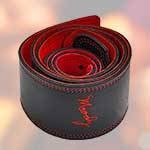This time, let me talk about the inertia block.
It is also known as the tremolo block, but for those unfamiliar with electric guitars, you might wonder, “What is that?”
Simply put, it serves two main functions: securing the strings to the bridge and fixing the bridge to the body.
So, how does it affect the sound? Well, there’s an interesting story about that...
Long ago, in Fullerton, California, there was a man named Leo Fender who ran a radio repair shop. (Yes, he is the founder of the famous guitar company, Fender.)
This man loved music but couldn’t play the guitar at all.
Despite this, Leo Fender developed the electric lap steel guitar and then, with his partner and friends, created the Esquire, the Broadcaster (later known as the Telecaster), and the Precision Bass. Not stopping there, he continued developing new products to keep up with the rapidly changing music scene, leading to the creation of the Stratocaster, which we all know and love.
One of the most notable features of this new product was the synchronized tremolo, which allowed the bridge to move using a special arm, creating a vibrato effect.
However, it had a major drawback: the sound was thin and lacked sustain.
The developers, puzzled, worked on improvements and realized that the issue was with the weight of the block.
By making the block larger and heavier, the sound quality improved. They fine-tuned the design of the block and the routing, leading to the final product.
Once it was released, it became very popular (although there were production challenges along the way).
Thus, it became a beloved classic still adored by many today.
Happily ever after.
In short, the point of this story is that the material and weight of the inertia block are crucial.
Consider that the bridge-to-body contact area is much smaller in a synchronized tremolo bridge compared to through-body or TOM-style bridges.
Now, let me introduce some of the tremolo bridges and inertia blocks used in guitars we carry at Sound House.
PLAYTECH / ST250 Rose White
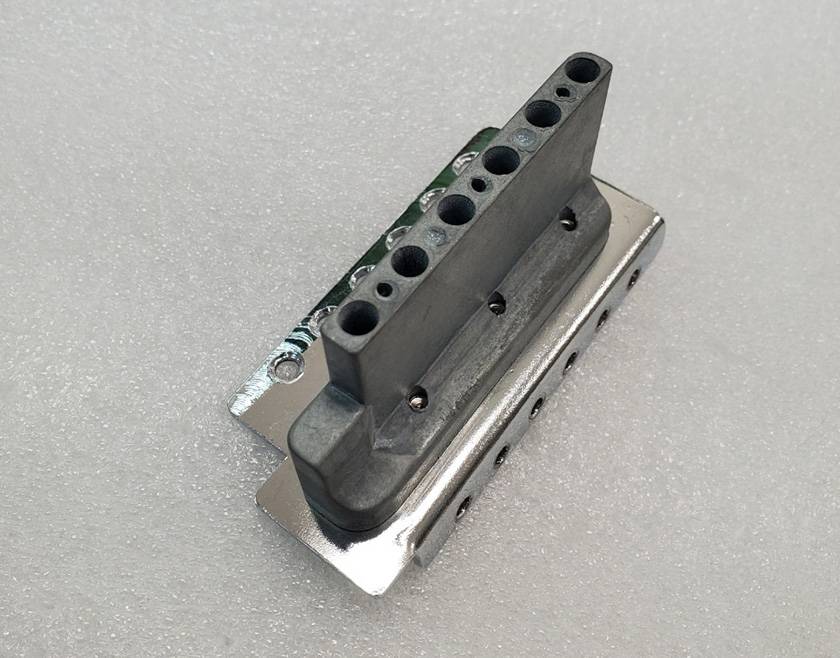
First up is this guitar, a pride of our company.
The block here is a bit on the thinner side.
But remember, this guitar’s main selling point is its price, and a heavier block isn’t always better.
Balance is key.
PLAYTECH guitars are very affordable, making them great for experimenting with bridge swaps or modifying other parts to enjoy different sound qualities.
Fender / Pure Vintage Stratocaster Tremolo Block

This is Fender’s genuine and the most standard inertia block by global standards.
Made of steel (iron) and weighing about 280g, it has an 11.2mm pitch in inches.
Many inertia blocks in commonly sold Stratocaster-type guitars are made of aluminum, but many believe the block should be steel for Strat.
Steel blocks offer tight, prominent low frequencies and sparkling, extended highs compared to aluminum.
If you’re unhappy with your guitar’s sound being muddy or lacking sustain, switching to a steel block might be worth a try.
Gotoh / 510T-FE1 Chrome
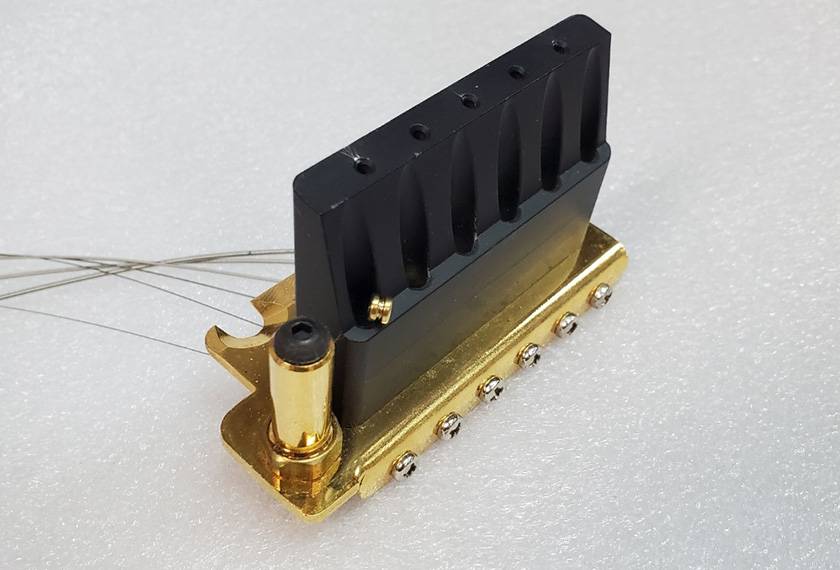
For those troubled by tuning instability during arming, this one’s for you.
The block has a unique shape due to the FST mechanism.
It is uniquely shaped to avoid interference between the strings and the plate at the point between the saddle and the ball end, greatly improving the recovery of tuning after arming.
Various factors contribute to tuning issues, including the nut, string guide, saddles, and springs, but the block is also a factor.
Although this block isn’t sold separately, you might consider replacing the entire bridge if interested.
Sago / Inertia Block Brass
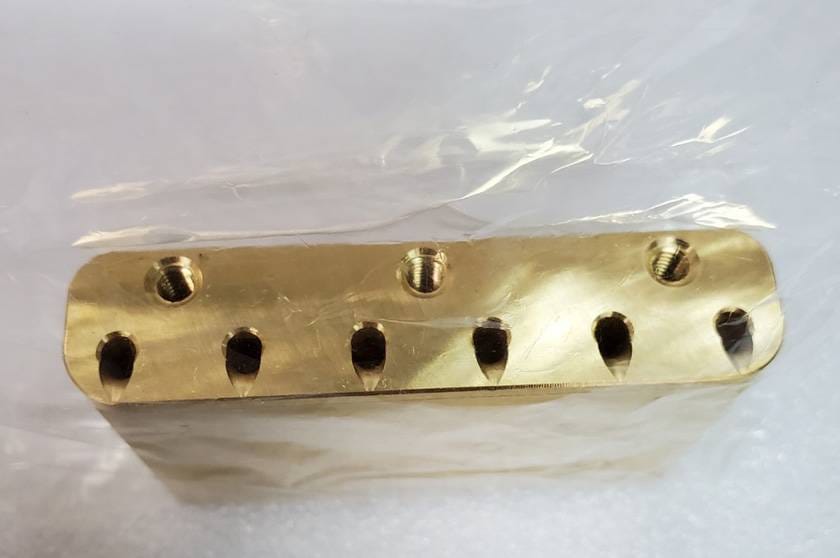
This is a brass synchro block.
Brass is known for its punchy midrange and sustain.
The string-through holes on the block are grooved to match the string angles, preventing interference with the plate for stable tuning like the 510T-FE1.
The attention to detail is evident, reflecting the manufacturer’s commitment to quality.
Additionally, this product is compatible with the Gotoh 510T.
The 510T is a bridge widely used on many guitars and this means you can easily replace your current block with this one right away, which is a great convenience.
Floyd Rose / Fat Tungsten Block 42mm
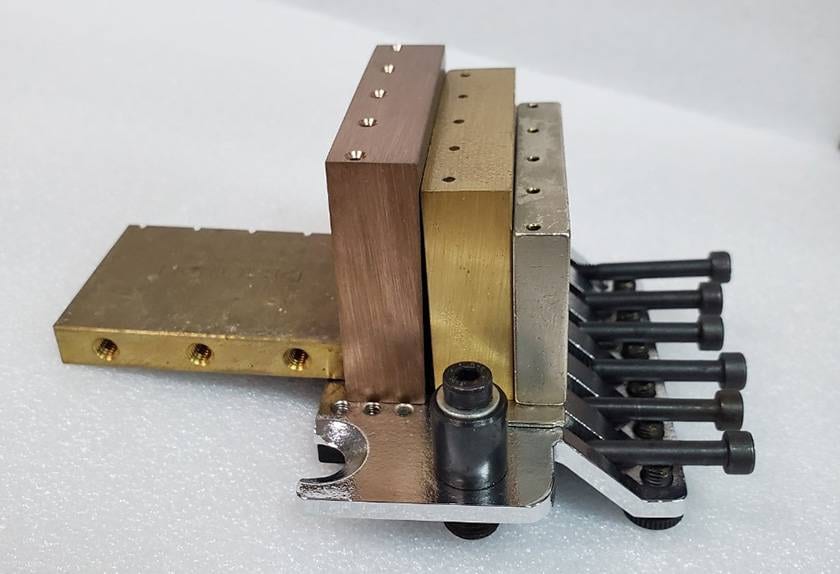
Finally, I have this block from Floyd Rose everyone loves.
Floyd Rose blocks are available in 32mm, 37mm, and 42mm, and the 42mm block is thicker and visually striking.
Seeing it in person makes you go, “Wow, really?” I personally love its over-the-top feel.
Brass offers powerful mids, while tungsten provides bright, clear sound, and both offer excellent sustain.
Replacing a Floyd Rose block can be challenging because it has many parts. This block looks robust indeed. Why don’t you try this out?
So, that’s it for my talk on inertia blocks. How did you like it?
I hope this has sparked your interest in inertia blocks.
Besides the ones introduced here, there are blocks made of aluminum, zinc, titanium, and stainless steel.
Explore and try different blocks to find your sound.
Lastly, a note on replacements: make sure to check the screw positions, specifications, and string spacing of your bridge.
Mismatched manufacturers can lead to incompatibility.
Also, consider the body thickness, as the block might protrude.
If you know someone who’s done it before, it’s good to ask for advice.
See you again on the Sound House Staff Blog.
Goodbye!





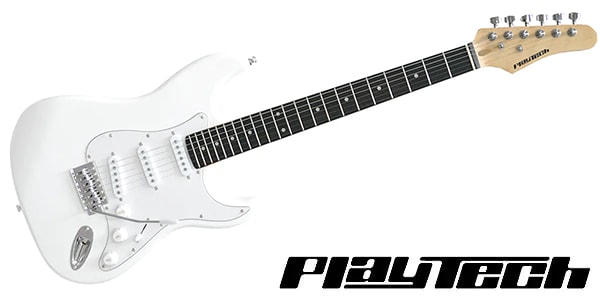
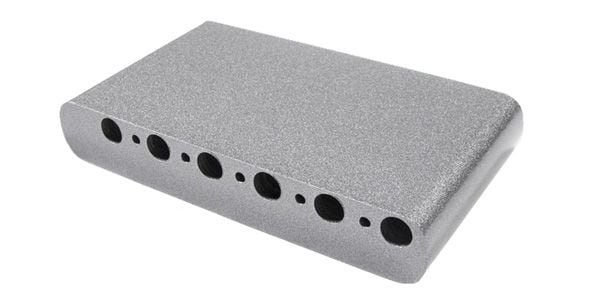
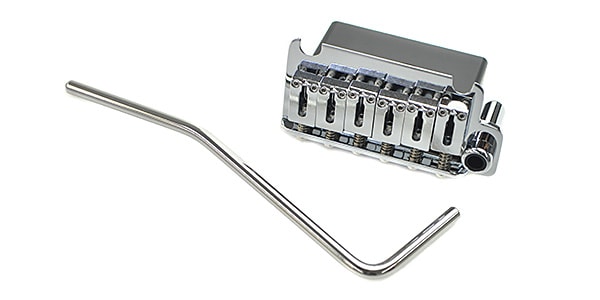
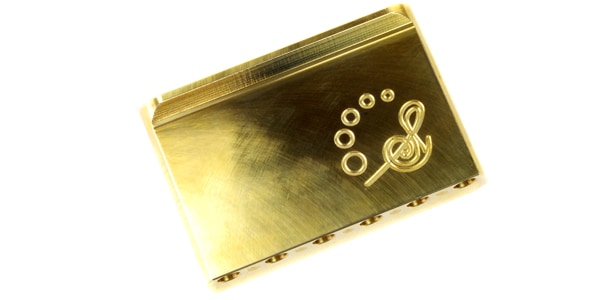
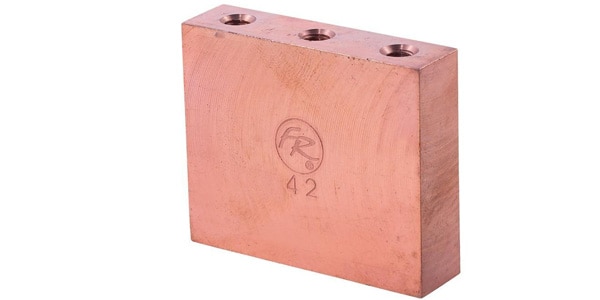






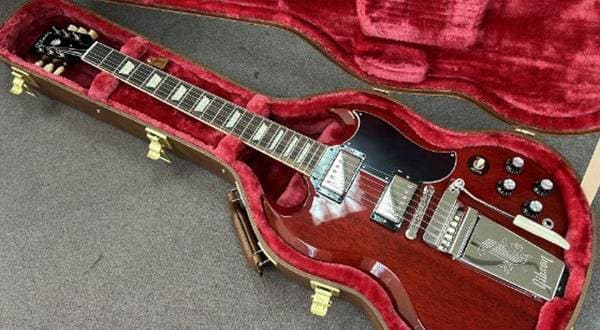
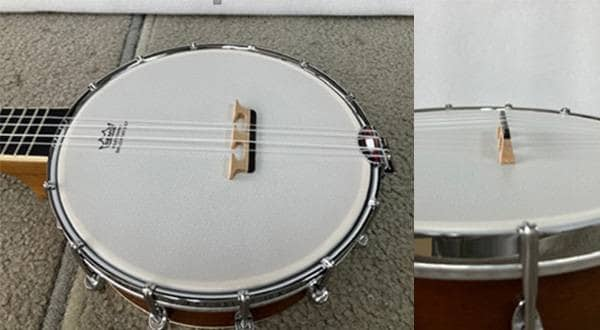

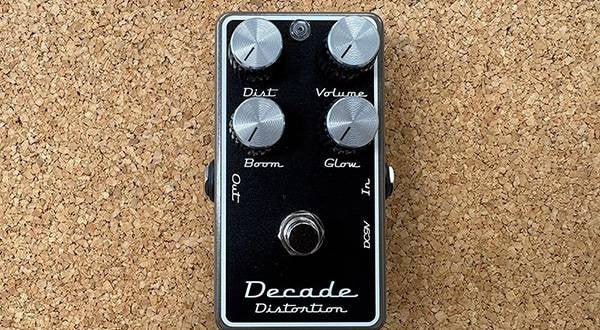
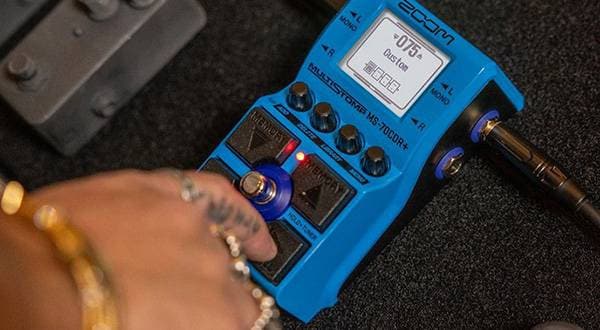
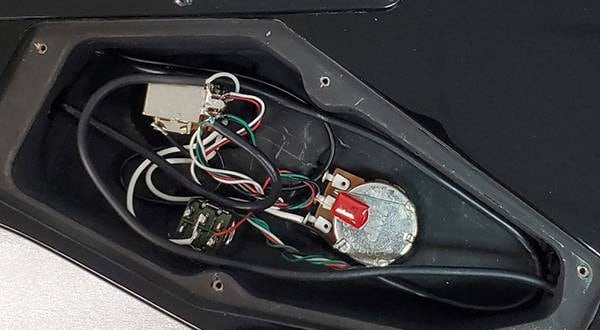
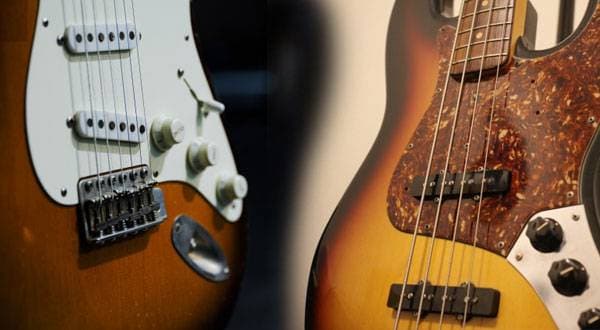
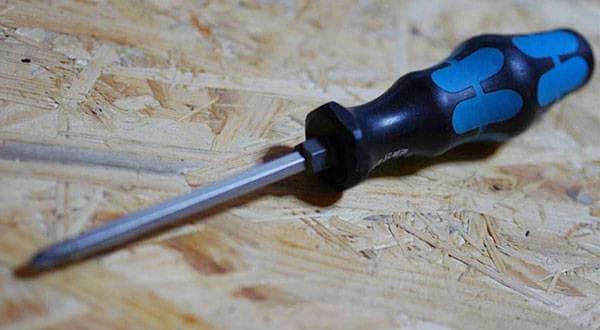
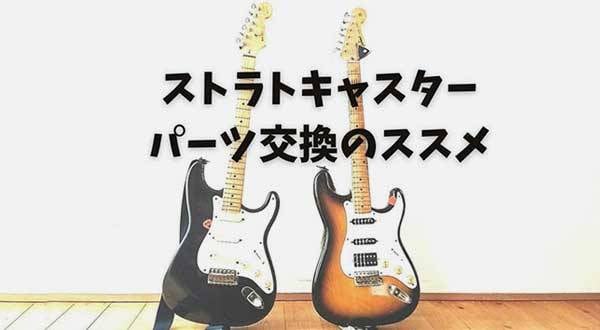
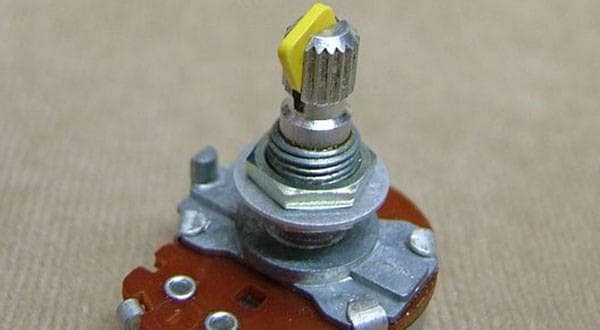
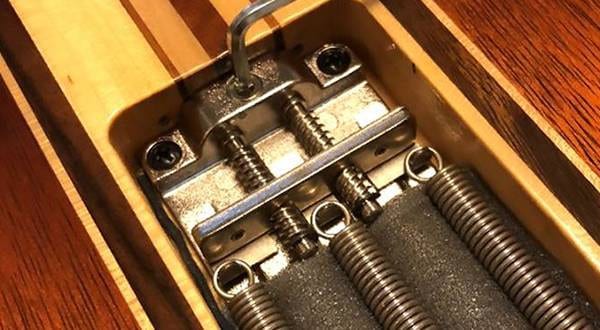
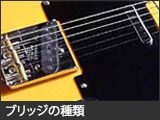 ブリッジの種類
ブリッジの種類
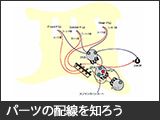 パーツの配線を知ろう
パーツの配線を知ろう
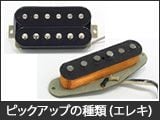 ピックアップの種類(エレキギター)
ピックアップの種類(エレキギター)
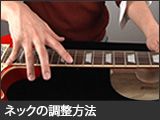 ネックの調整方法
ネックの調整方法
 ギターのお手入れ
ギターのお手入れ
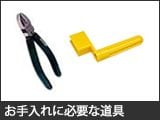 お手入れに必要な道具
お手入れに必要な道具

